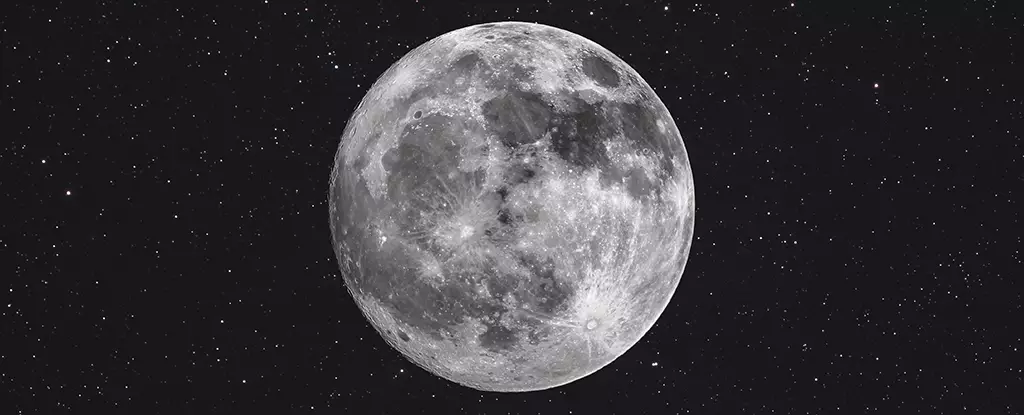The Moon, our natural satellite, may seem unchanging and eternal, but recent studies suggest otherwise. Scientists in the United States have discovered that the Moon is gradually shrinking in size as it cools down. Although this process occurs at a gradual pace, approximately 45 meters (more than 150 feet) every few hundred million years, it could have significant implications for future lunar missions. This article will explore the findings of this study and the potential risks it poses to the stability of the Moon’s surface, specifically in the region where NASA plans to land astronauts in the future.
The research conducted by planetary scientist Tom Watters from the Smithsonian Institution highlights the importance of understanding the geological stability of the Moon before establishing permanent outposts. According to Watters, shallow moonquakes capable of producing strong ground shaking in the south polar region could result from slip events on existing faults or the formation of new thrust faults. When planning the location and stability of future lunar bases, it is crucial to consider the global distribution of young thrust faults, their potential for activity, and the possibility of new thrust faults forming due to ongoing global contraction.
The Role of Lobate Scarps
This study focused on a specific lunar feature known as lobate scarps, which are extended ridges believed to be the result of tectonic activity. By analyzing imagery from the Lunar Reconnaissance Orbiter alongside data collected by seismometers during the Apollo missions, researchers identified a correlation between lobate scarps near the Moon’s South Pole and moonquakes. In fact, one of the most powerful moonquakes ever recorded by the Apollo seismometers, a magnitude 5 quake lasting several hours, was possibly caused by these scarps. The presence of lobate scarps in the region earmarked for future manned missions raises concerns about potential landslides and their impact on surface stability.
To understand the risk of landslides and their potential consequences, it is important to grasp the delicate nature of the Moon’s surface. Geologist Nicholas Schmerr from the University of Maryland describes it as “dry, grounded gravel and dust.” Over billions of years, the lunar surface has been bombarded by asteroids and comets, resulting in the ejection of angular fragments. These fragments, ranging in size from micron-sized particles to boulders, are loosely consolidated. The loose sediments create an environment where shaking and landslides can occur with relative ease, posing a threat to any lunar infrastructure or manned missions in the region.
Although scientists currently possess limited data regarding the frequency and location of moonquakes, studies such as this provide valuable insights for future lunar missions. As humanity edges closer to the launch of the crewed Artemis mission, ensuring the safety of astronauts, equipment, and infrastructure becomes paramount. The findings of this research will aid in selecting the most secure locations for Moon landings and establishing long-term lunar bases, with a focus on minimizing the potential risks associated with unstable lunar terrain.
The discovery of the Moon’s shrinking size and its association with landslides and quakes near the lunar South Pole has significant implications for future lunar missions. By analyzing lobate scarps and their correlation with moonquakes, scientists are establishing a better understanding of the risks involved in developing permanent lunar outposts. The fragile and loose nature of the Moon’s surface necessitates careful planning to ensure the safety and stability of astronauts and infrastructure. As space agencies embark on ambitious plans for lunar exploration, the knowledge gained from studies like this will help pave the way for humanity’s sustained presence on our closest celestial neighbor.


Leave a Reply